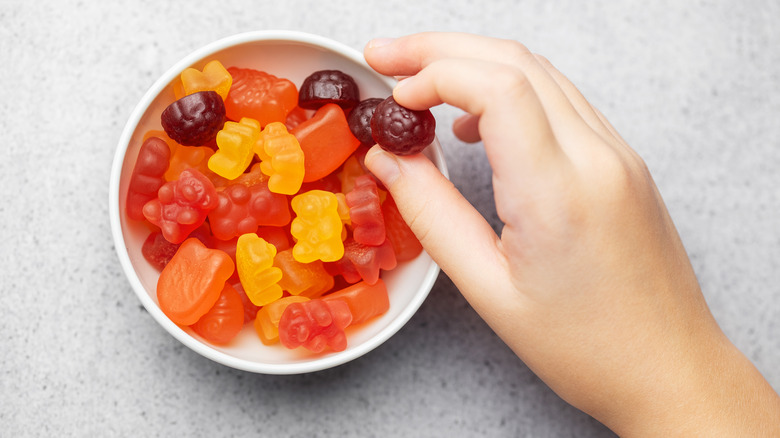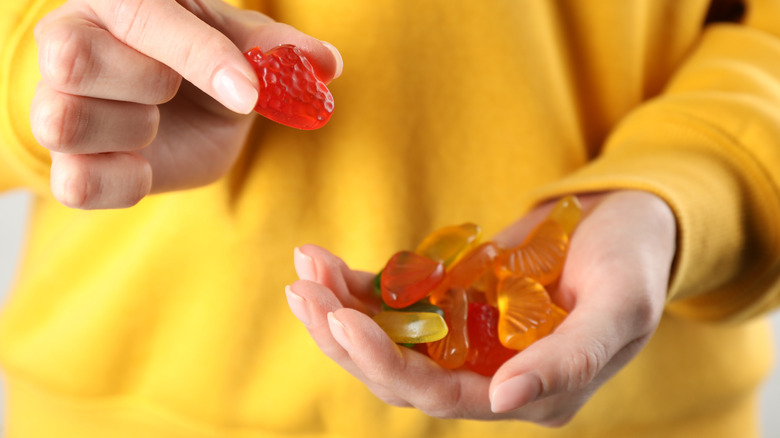'Made With Real Fruit' Doesn't Mean What You Think For Fruit Snacks
Fruit snacks are the staple of elementary school lunchboxes and grown-up snack breaks alike. Grown-ups still might be struck by the occasional craving for some of our most beloved discontinued brands from the '90s (we miss you, Shark Bites). But, when foodies get a "fruit snack" craving, what exactly are they craving? Because most of the time, it isn't real fruit.
It's no secret that the modern American grocery store is lined with aisles of food packaging spouting false claims. Misleading labeling has emerged as a major issue in the nutritional and environmental sphere — like when Clif was sued for calling its high-sugar energy bars "nutritious," and the way canned tuna is still permitted to be labeled as "dolphin-safe," even if it's not.
When you spy a pack of fruit snacks with printed with the "made with real fruit" promise, that promise is true — to some degree. The packaging doesn't have to mention exactly what percentage of the total content of the fruit snacks is real fruit versus artificial additives. The FDA currently does not have a minimum requirement of how much real fruit content must be present to substantiate this claim (it could literally be 1% and still qualify). Similarly, fruit snacks labeled as "fruit flavored" rarely contain any real fruit at all, instead containing fruit-flavored chemicals. No matter how many images of grape and oranges marketers print on fruit snacks boxes, they're still gummies — and often closer to candy than a fresh apple.
Those snacks might be 1% real fruit
Back in 2018, the Academy of Nutrition and Dietetics (AND), the largest organization of food nutrition professionals in America, formally requested that the FDA tighten legal regulations surrounding unsubstantiated "made with real fruit" claims on food labels. Labeling products that are "essentially candy" as "nutritious and healthful" — as previous lawsuits noted — and printing them with "misleading images of whole fruits and vegetables when only minuscule amounts are in a serving," argued AND (via FoodNavigator USA), can impact unknowing consumers' nutritional balance, wrongly making people think that certain brands of fruit snacks are contributing to their daily intake goals. Processing methods like pasteurization and heat-resistance treatments can further reduce whatever nutritional value is bioavailable in those gummies.As of this writing, the FDA has yet to implement such changes.
To conduct a quick test, foodies can check the ingredients label on their fruit snacks. Ingredients must be listed in order of volume. If fruit is listed near the beginning, then the real fruit content is high enough to be noteworthy. If fruit doesn't appear until the end of the ingredients list, however, chances are those snacks are more gummy than actually fruity.
Fruit in various highly-processed forms like powders, purees, and concentrates are currently also permitted under the "made with real fruit" umbrella. Ingredients labels also typically include the type of form in which the fruit is present, which can give consumers a better idea of whether that advertised "real fruit" is the real deal or mostly synthetic.

